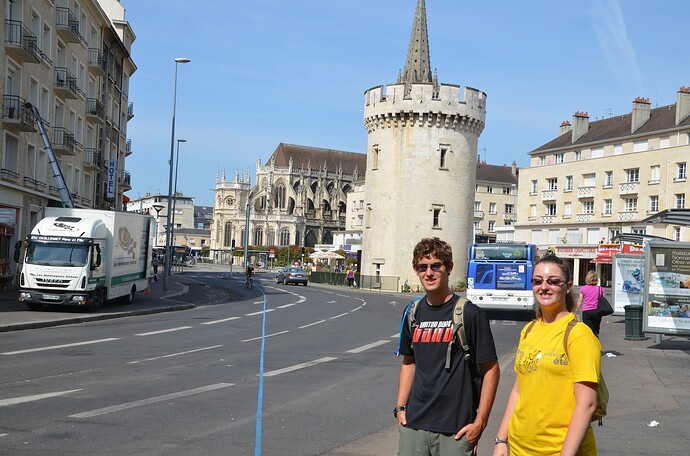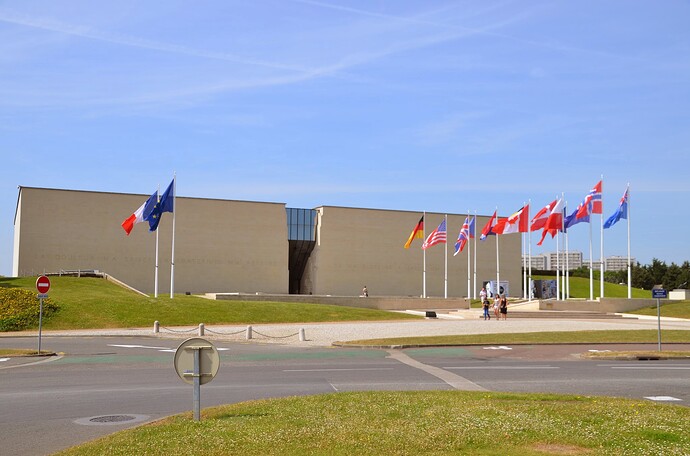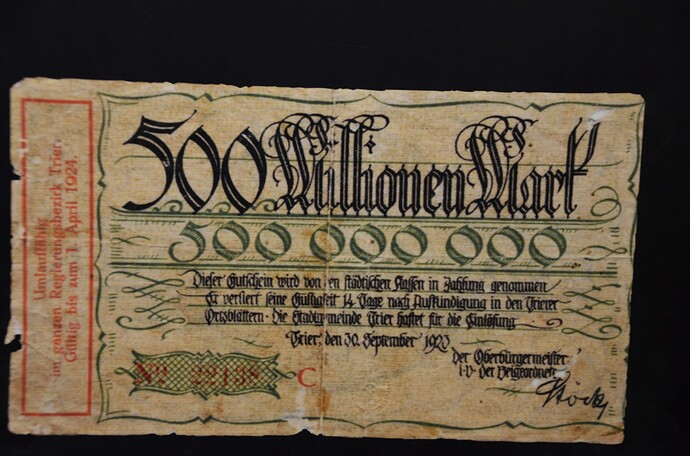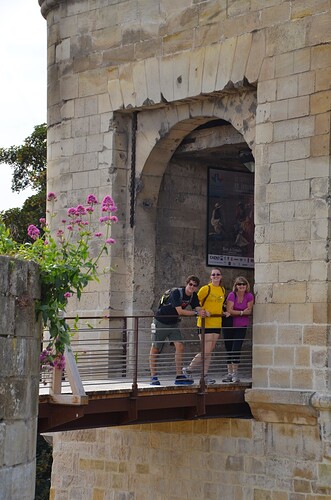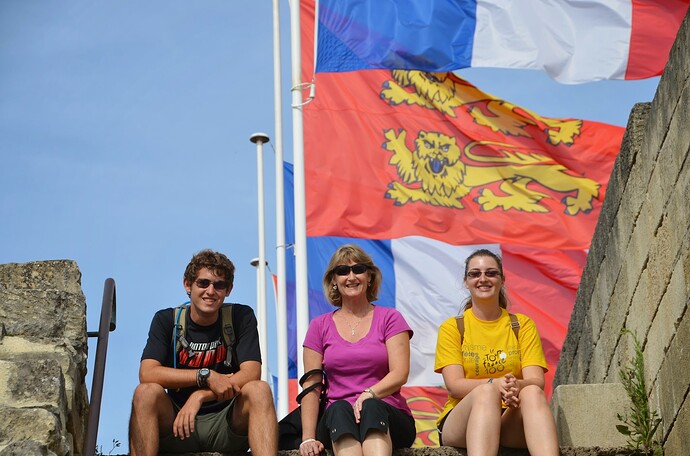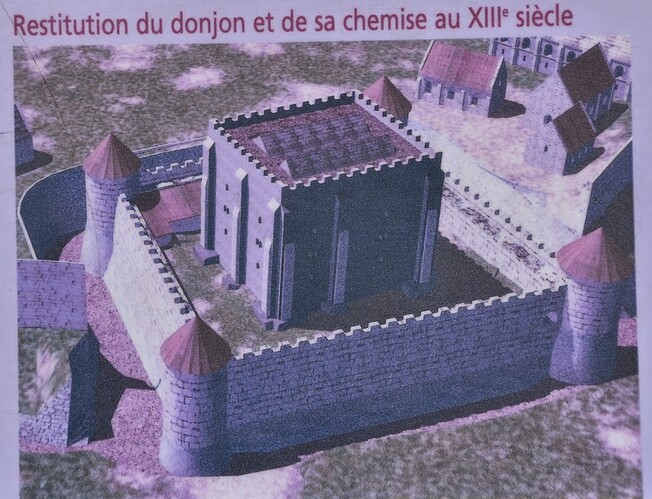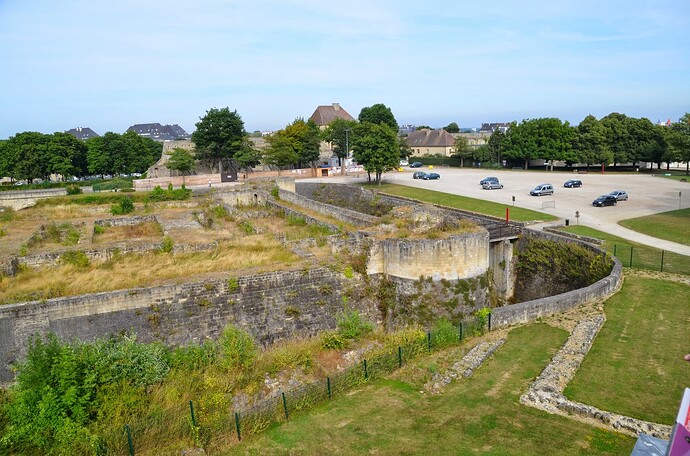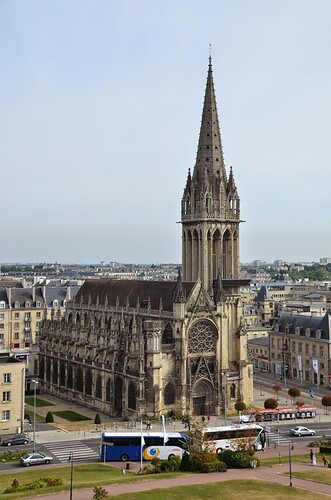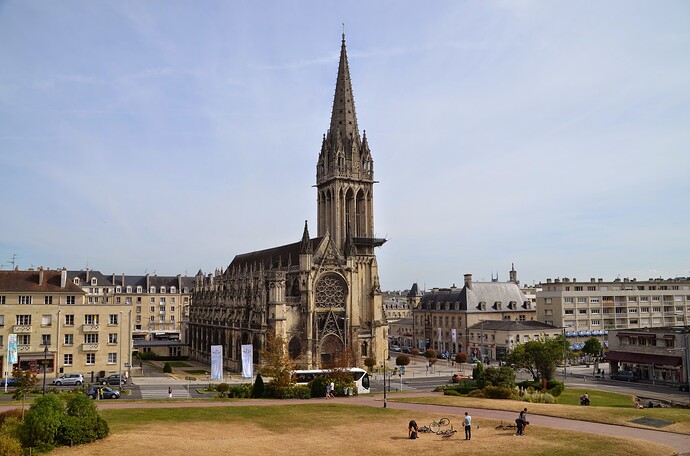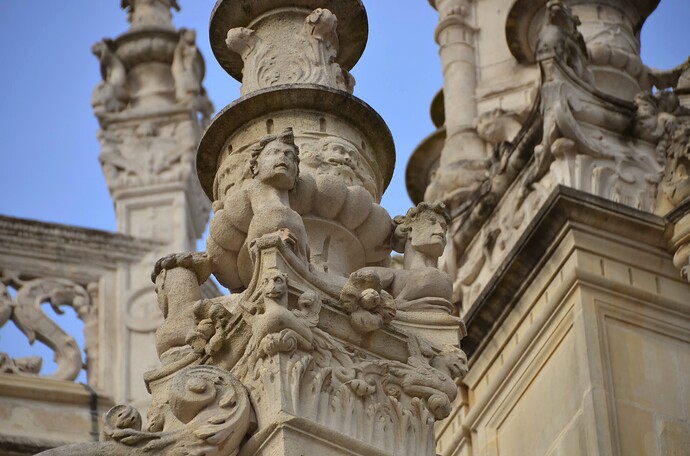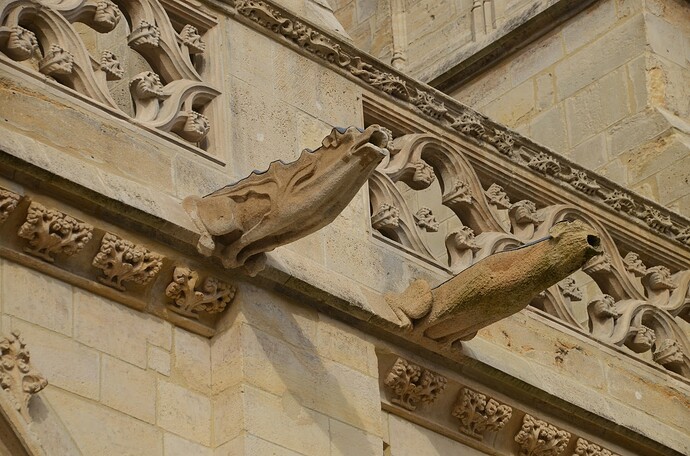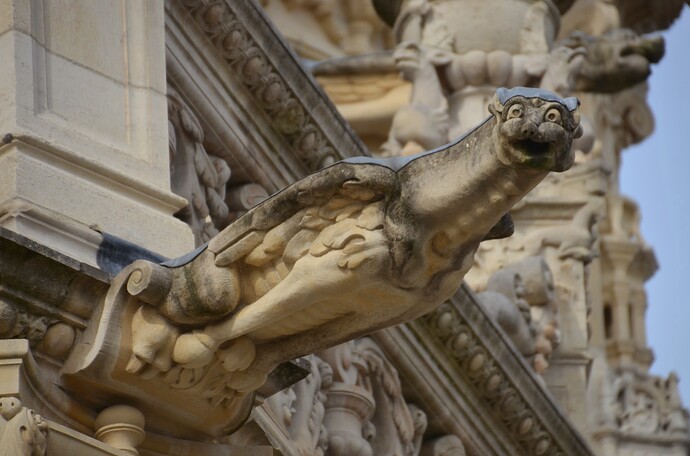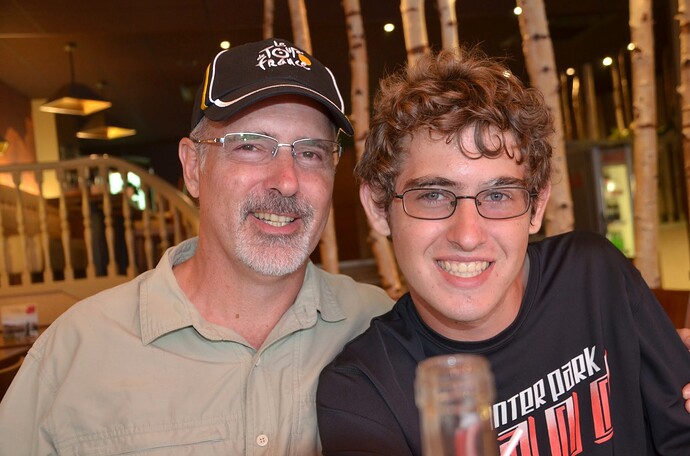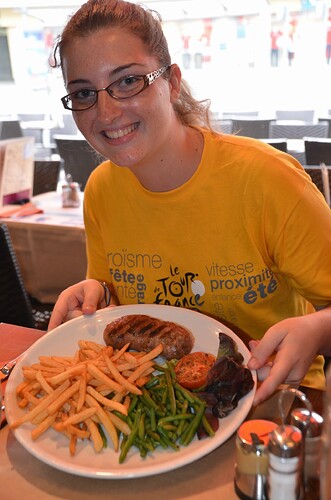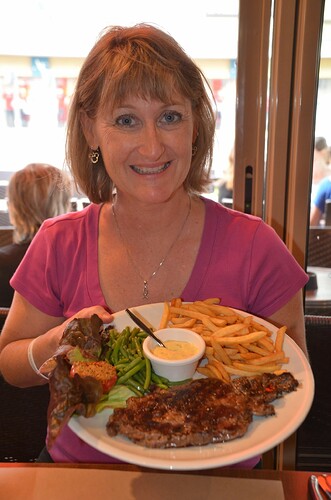Our travel pace finally eased as we anchored ourselves in Caen for two nights. The previous day was largely dedicated to the journey from Lyon, and today’s agenda involved exploration. A notable highlight was our visit to the Memorial Museum, reached by city bus.
Next, we journeyed to the Caen Castle that majestically overlooks the city. This castle was built upon the remains of the fortress of William the Conqueror, the 11th-century Norman King who significantly influenced England’s history. Impressively, it withstood the devastation of World War II.
Authentic US Army MREs for lunch! The setting was perfect, a WW II museum in Normandy. Mom had bought these months prior and who knows how old they were. I recall the chocolate pudding was OK but everything else, not so much.
Leroy Tower, part of the fortifications of Bourg-le-roi, was built on the left bank of the Odon, in 1346.
Nice mix of the “new” surrounded by the “old”.
The Mémorial de Caen would be our launching point for the day. If you look closely you can see reflective glass in the center of the roofline. We used this reflection in the next photo.
There was an angled window at the entrance to the museum that reflected light exactly like a mirror. We noticed that it pointed downward toward the entrance and we could see ourselves! We couldn’t miss an opportunity to capture a unique family “selfie.”
Just can’t pass up an opportunity for a tricky photo, and it would be the last photo for a while, no photos inside ![]()
500 Million Marks. You can buy this note for $8.70 on ebay. So tempting to just keep printing money!
Footbridge over the mote.
If everything we saw was expected, travel would be boring.
Once the fortress of William the Conqueror…
…is now just a few walls and a mote.
Student Sketching - Sculpture by E. le Tual de Laheuderie, made in 1905, is now visible in the grounds of the Château de Caen, Calvados. It was part of a larger monument to the memory of the jurist Charles Demolombe (1804-87), formerly located pl. of the Republic.
The Church of Saint-Pierre holds a significant place in history because it was within this very edifice that William the Conqueror is said to have married Matilda of Flanders in the 11th century, defying the Pope’s ban on their union.
Though parts of the city were severely damaged, the Church of Saint-Pierre miraculously remained largely intact, making it a testament to the city’s resilience.
The church is renowned for its impressive gargoyle collection.
These unique stone sculptures adorn the exterior of the church, serving both decorative and functional purposes.
The gargoyles not only add an aesthetic charm to the building but also act as water spouts, diverting rainwater away from the structure.
Their intricate designs and fantastical shapes captivate visitors, offering a glimpse into the rich architectural heritage of the church and the city of Caen.
Lots of credit to the youngsters to be smiling after another day of sensory overload.
Yes, smarty pants, those are French Fries!
All for today, tomorrow the Normandy Beaches!

